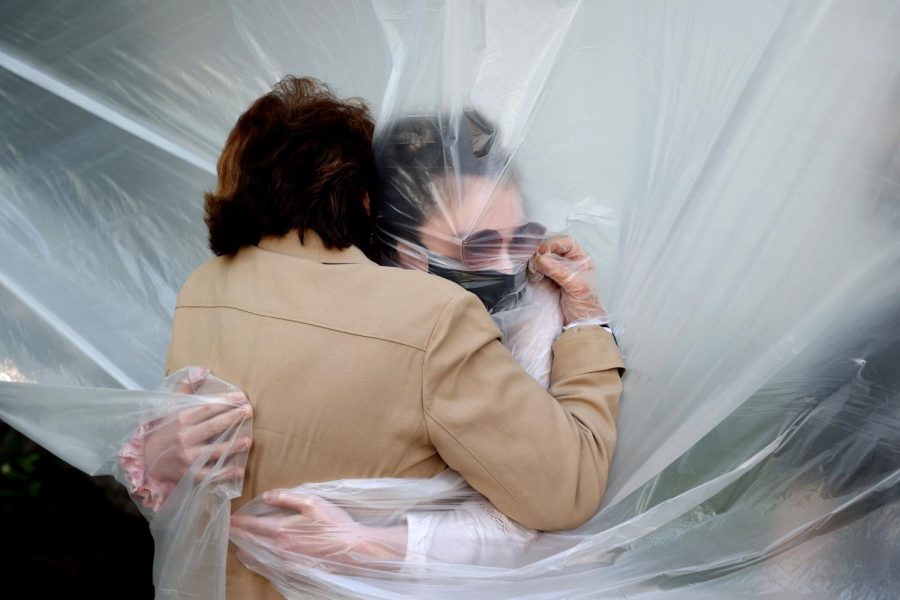A year of COVID-19
December 18, 2020
The pandemic has been toying with the world’s expectations, plans and overall daily life for nearly a year. On the daily, news reports filled with rising case numbers and death tolls, which had people enamored and confused by the staggering projection of the pandemic.
It started back on Nov. 17, 2019, in the Hubei province of China, where the first-ever individual was believed to have contracted COVID-19. On Jan. 11, 2020, China reported its first confirmed death from the virus. Only two days after, COVID continued to spread, as Thailand reported the first recorded case outside of China. The disease quickly spread to many other countries. The U.S. received its first case on Jan. 20, after a patient in Washington was diagnosed by the state as well as the U.S. Centers for Disease Control and Prevention. This spread led the World Health Organization to declare a global emergency on Jan. 30.
As time went on, COVID drastically transformed cities all around the world, leading countries to mandate lockdowns in an attempt to control the virus. Cities were left deserted, reflecting the world as if it were a dystopian science fiction movie.
Progression of life with COVID has students reflecting on their experience with quarantine and processing the many feelings resulting from the pandemic.
The initial rapid growth of COVID prompted various reactions from people and countries around the world. Some countries showed initial indifference towards the virus, while other countries took immediate action.
The state of the world with COVID had a drastic effect on many student’s lives such as sophomore Pearl Sung, who had a personal stake in the spread of the virus.
“Two of my hometowns had gotten COVID before the U.S., and I got really worried for my family,” Sung said. “And with China and Japan gaining many cases in the first few months, it made me worry about my friends in the area.”
While students who had personal connections to the initial spread of the virus immediately took concern, that realization came much later for many other students.
“I thought, ‘What’s the big deal?’” sophomore Cassie Aizman said. “It’s just like a cold; it’ll pass pretty soon. I believed it was pretty serious maybe after about two to three months.”
The first cases that appeared in the U.S. were politically undermined, with no immediate government action. The course that the pandemic was going to take was unclear, and March 13 marked the last day of in-person school for the rest of the year.
“Right before school was closed, I had an audition that I was unable to attend,” Sung said. “This with the cancellation of sports and clubs worried me about what it meant for the school environment when we returned.”
The rapid changes that came one after another left Sung worried for what was to come.
With differing perspectives, thoughts on the progressing cancellation of school activities meant accommodating to new changes.
“When school was first canceled, I was really really excited!” freshman Christina Nguyen said. “Me and my friends were texting each other, and we were all saying our goodbyes, but then we all realized that we were all moving on and probably never going to see each other again.”
In early March, many students hoped that life would resume in a span of a couple of months, with everyone going back to school and work without quarantine and social distancing. That evidently did not happen.
Among the challenges that came with having to accept this new reality, many students took advantage of the large amount of time that lockdown brought.
“A Positive thing out of quarantine is that I got to cook more! I learned a bunch of new recipes and decided that I was going to put them to use. I also got to catch up on a bunch of TV shows that I had missed. And I also got to spend time with my family,” Nguyen said.
Along with the advantages, the downsides of social distancing and lockdown guidelines made reuniting with loved ones a foreign memory. With important dates such as birthdays and holidays, plans to celebrate with loved ones were nonexistent.
“For my birthday it was very different, I had planned to have a lot of friends coming on my birthday because with the limits on travel, I was alone,” Sung said.
The pandemic has served as an enlightening reminder that times of peril reveal the worst and the best of people.
“When people tried to downplay the virus, I just thought, ‘Okay,’” Aizman said. “Tell me how it would feel if you got sick or one of your family members died.”
According to WHO, roughly a year after the first case of COVID, there are over 71 million confirmed cases globally, and COVID has resulted in the death of over 1.6 million people.
The upcoming presidential transition and first COVID vaccines being distributed around the world means change and progress for students.
“Change can happen if government officials are able to communicate with each other and get a basic level of agreement,” Sung said. “They will be able to make the country better and work out a solution on a state to state basis.”
COVID has plagued 2020 with many challenges. To signify the rapid changes that the pandemic has brought, the “new normal” is forever changing with every new challenge brought with COVID. With nearly a year into this pandemic, everyone has more sense of how the events will progress, marking hope as a characteristic of the future.


